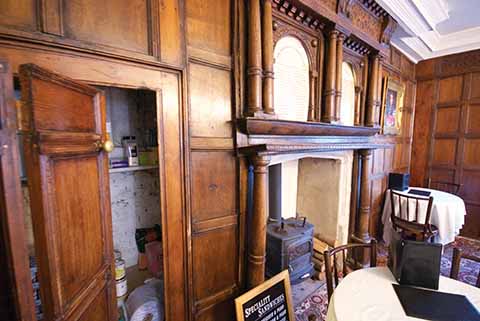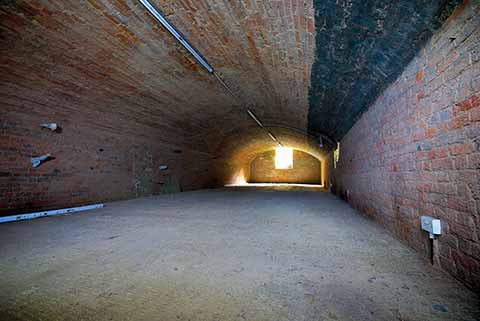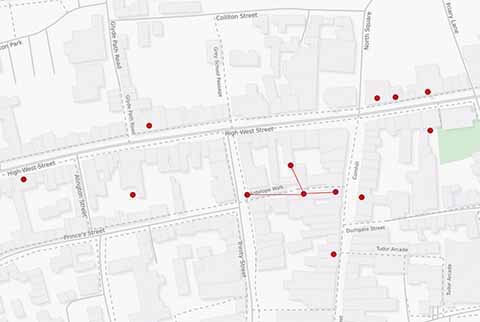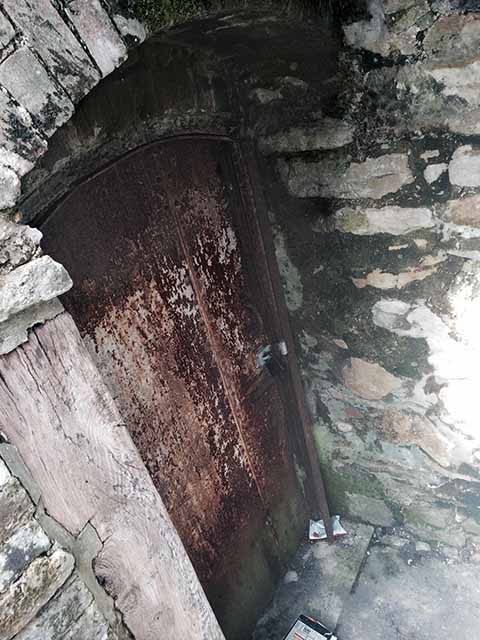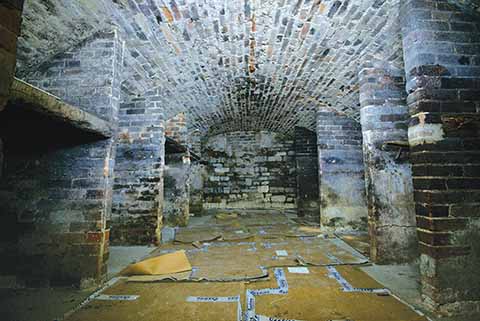Underground Dorchester
We delve beneath the streets of the county town with the guidance of ‘The Urban Explorer’
Published in September ’19
‘Come and look at my basement,’ the barber said as he cut my hair in his since-closed shop on South Street. For years I had been told tales of connecting tunnels running under the streets of Dorchester. Sure enough, below the barber’s was a long corridor running the length of the building. It ended in line with the street outside, but an obvious archway, now bricked up, remained. Here was proof that there was at least something behind the tales of tunnels.
After months of searching for further ancient tunnels in Dorchester and finding dead end after dead end, I read in the Dorset Echo about two successive finds within a week of each other by a keen archaeologist and historian, Terry McGrath, who at the time was the Antelope Walk caretaker. I knew I had to get in contact with Terry, and as luck would have it, my partner was working in one of the Antelope Walk shops.
There was a lot of excitement about the tunnels surrounding Antelope Walk because they were secret passages used by the notorious Judge Jeffreys, who lodged in High West Street during the Bloody Assizes. The passageway would take him to directly beneath the court room (now the Oak Room tea rooms) and a staircase spiralled up to ensure his safe arrival through a secret door set in the wood panelling of the court room. This would have allowed him to completely avoid the public during the trials following the collapse of the Monmouth Rebellion.
It felt surreal to climb down into the tunnels via shop floors and passageway trapdoors. The tunnels under Antelope Walk no longer connect to one another, but as I visited each part individually, it soon became clear where they once linked up.
It was during the discovery of the Antelope Walk tunnels that I was introduced to David Taylor, until recently Mayor of Dorchester, and he shared with me some of the places he had uncovered over a fifteen-year period. My handful of discoveries were nothing compared to the sheer abundance of history uncovered by David, who thinks that there are over a hundred such partial tunnels under Dorchester’s streets and buildings.
In 1613, Dorchester, like many other Dorset towns and villages, was subject to its own ‘Great Fire’, which is said to have begun in a chandler’s. Much of the town succumbed to the fire and certainly some of what we see today as basements and tunnels would have actually been the lower floors of the town’s shops, houses and pathways, which have subsequently been built over.
I did manage to share with David a doorway off Durngate Street which descends below the buildings and has a quite remarkable feature above it: original, drop spot glass lights, to allow natural light in and help you down the steps inside. It is amazing that these have survived all the surrounding building works for decades. As well as the beautiful, arched Georgian brickwork in cavernous rooms, this space is the most complete link under High East Street and looks as though it would have once connected to the Kings Arms Hotel across the street – which is currently being renovated, so who knows what they’ll find!
Further up High East Street, the Corn Exchange is home to a fascinating set of underground rooms once used as a police jail. Holding cells, complete with metal barred doors, are still in situ and used for storage.
Away from the centre of town, in the Saxon-era region of Fordington, lies another interesting underground space: the Brewhouse Cellar. Dating from around 1810, the above-ground buildings have since changed but the cellar remains. Built from Broadmayne brick, the entrance stairway is impressive and the size of the cellar remarkable. Even more remarkable is that this isn’t all of it; the northern end of the cellar has been sealed with a stone wall and the void behind never explored. How far does it go? Is it pure coincidence that it points exactly in the direction of all the other explored underground locations in the town? Probably. But it’s nice to daydream!
Discoveries are happening in Dorchester on a daily basis. David has given several talks recently about the tunnels and the history associated with them. As more are found, we will be able to better piece together more of the fascinating history of Dorchester and what lies beneath.
www.theurbanexplorer.co.uk
Terry’s tantalising gaol tale
Terry McGrath first read about a tunnel from the River Frome to Dorchester prison 25 years ago in an old book, according to which river water from the Frome was used to feed the treadmills at the prison. The tunnel served as an access through which prisoners would have been sent to clean the filter beds that led to the treadmills. It is possible that the tunnel might be older than presumed, as the book’s author suggested it was there before the Victorian jail was built. Terry found the tunnel, but had to keep quiet about its existence as the prison, perhaps understandably, didn’t want a potential exit from the jail publicised.
After the closure of the prison in 2013, he tried to find the entrance again and, with the help of David Taylor, he succeeded in unearthing the grille that covered the tunnel entrance.
